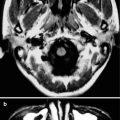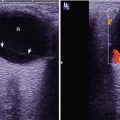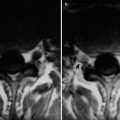(1)
Radiology Department Beijing You’an Hospital, Capital Medical University, Beijing, People’s Republic of China
Abstract
In the year of 1983, a special kind of virus was initially isolated from the blood of a patient with AIDS [1]. Later, the virus was named human immunodeficiency virus (HIV). With the enlarged population of AIDS patients globally, the isolated virus showed variances. Thus, the virus was classified into two types, namely HIV-1 and HIV-2. HIV-1 has been known to have a widespread and a earlier identification. With recently advanced molecular biology technology, polymerase chain reaction (PCR) was applied to characterize HIV-1 into seven subtypes, namely A, B, C, D, E, F and G. The following is of the knowledge about HIV-1.
Keywords
Human immunodeficiency virusSources of InfectionsRoutes of TransmissionPopulation DistributionMolecular Epidemiology of HIV/AIDS4.1 Pathogens
In the year of 1983, a special kind of virus was initially isolated from the blood of a patient with AIDS [1]. Later, the virus was named human immunodeficiency virus (HIV). With the enlarged population of AIDS patients globally, the isolated virus showed variances. Thus, the virus was classified into two types, namely HIV-1 and HIV-2. HIV-1 has been known to have a widespread and a earlier identification. With recently advanced molecular biology technology, polymerase chain reaction (PCR) was applied to characterize HIV-1 into seven subtypes, namely A, B, C, D, E, F and G. The following is of the knowledge about HIV-1.
HIV is a membrane-budding retrovirus. Structurally, it is a symmetrically cubic icosahedron spheroid particle with a diameter of 100–140 nm. It grossly is composed of a compact conical core and viral envelope. Its nucleocapsid is composed of P24 Gag viral capsid protein, containing two identical positive single-stranded RNA, transcriptase (P51/P56), integrase (P32) and stromatin (P9 and P6). The viral envelope has a framework of two layers lipid membranes, with a surface containing 72 spikes (glycoprotein compound). Each spike is composed of surface glycoprotein GP120 and one transmembrane protein GP41 trimer. GP120 combines with the cell receptor (mainly CD4 T cell). Stromatin P17 attaches to the inner lipid membrane and links between the membrane and the stroma of the core, for stabilization.
The viral genome consists of totally nine genes, including three structural genes (gag, pol, env), three regulatory genes (tat, rev, nef), and three virus infectors (vif, vpr, vpu/vpx) (vpx in HIV-2). Their functions are listed in Table 4.1.
Table 4.1
Functions of genes
Category | Gene | Function |
|---|---|---|
Structural Genes | Group specific antigen (gag) | To code the core proteins p24, p17, etc. |
Polymerase (pol) | To code polymerases and integrases. | |
Envelope (env) | To code envelope proteins, p120 and gp41 | |
Regulatory Genes | Transactivator (tat) | To positively regulate HIV genes |
Regulator of expression of virion proteins (rev) | To enhance the expression of gag and env for the structural proteins | |
Negative factor (nef) | To suppress the multiplication of HIV | |
Viral Infectors | Virion infectivity factor (vif) | To enhance intracellular multiplication and the infectivity of HIV, assisted by some cytokines |
Viral protein, R (vpr) | To accelerate the production of viral protein | |
Viral protein, U (vpu) | To promote the release of HIV-1 from the cell membrane | |
Viral protein, X (vpx) | To be required in HIV-2 multiplication in lymphocytes and macrophages; to enhance the formation of virions |
HIV can survive for more than 15 days at room temperature (22–27 °C) in liquid circumstance. However, it is sensitive to heat. Temperature of 56 °C for 30 min deprives HIV of its infectivity to T lymphocytes in vitro and partially inactivates HIV in serum. Commonly, after being at a temperature of 60 °C for 3 h or at a temperature of 80 °C for 30 min, no infectious virus can be detected. As a result, WHO recommends a temperature of 100 °C for 20 min to inactivate the retrovirus. HIV has no resistance to acid, with a pH value of 3.0 decreasing logarithmically the virus titer by 4. However, it is resistant to alkali, with a pH value of 9.0 slightly decreasing the virus titer. It is worthy noting that the virus is quite sensitive to chemicals of disinfectants and decontaminants. In 0.2 % potassium hypochlorite, 0.1 % domestic bleaching powder, 0.1 % glutaric dialdehyde, 0.5 % NP40, 0.5 % paraformaldehyde or 30 % alcoholic solution for 5 min, or in 20 % alcoholic solution for 10 min, HIV can be inactivated.
4.2 Sources of Infections
As far as we know, human is the only host or source of infection of HIV. Chimpanzees are sensitive to HIV and a strain of retrovirus similar to HIV-1 was once isolated from a chimpanzee captured in mid Africa. Evidence so far still is still weak to be persuasive for animals as the source of infection of the disease. HIV has been isolated from blood, sperm, cerebrospinal fluid, saliva, tears, cervical discharge, urine, breast milk, brain tissue and lymph node of infected persons. However, its spreading is via blood, sperm and cervical discharge, from which the virus is the most frequently isolated with the strongest infectivity. The asymptomatic infected persons as well as the infected persons with negative antibody are more epidemiologically dangerous. In order to define the diagnosis of AIDS, the serum should be tested for HIV antibody. The epidemiological studies using such test should pay focused attention to the following cases: (1) false-positive findings caused by serum contents of human leukocyte antigen (HLA), antinuclear antibody, autoantibody or plasmodium antigen and false positive findings caused by heated serum at 56 °C; (2) negative findings in end-stage patients or extremely weak patients; (3) rare occurrence of negative antibody but positive antigen.
4.3 Routes of Transmission and Population Distribution
HIV survives in blood, sperm, vaginal discharge and breast milk of infected persons. Therefore, its transmission routes include sexual contacts (heterosexual, homosexual or bisexual), blood and blood products (sharing the needle for intravenous drug abuse, interventional medical operations), vertical mother-to-child transmission (ante partum, partum, post-partum). Daily life contacts including shaking hands, hugging, etiquette kissing, eating and drinking together, sharing toilets or bathrooms, sharing offices and public transportations and sharing entertaining facilities do not transmit HIV/AIDS.
The susceptible populations of HIV/AIDS refer to male homosexuals, intravenous drug abusers, hemophilic patients, and people receiving blood transfusion or blood products and people having sexual intercourse with person from above mentioned high risk populations.
1.




Male homosexuals, including bisexuals is the high risk population due to the anal sex. But homosexual is not equal to AIDS patient.
Stay updated, free articles. Join our Telegram channel

Full access? Get Clinical Tree







